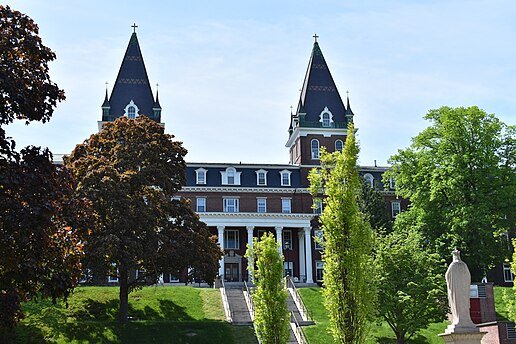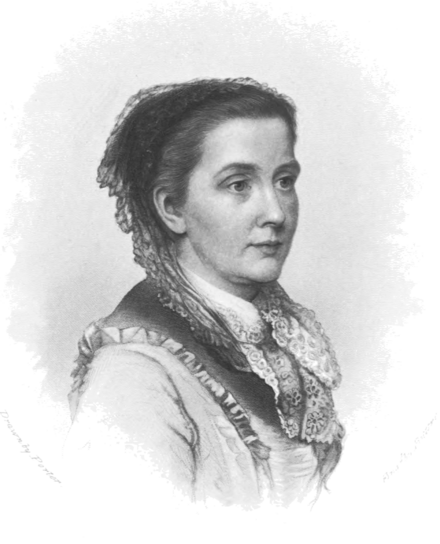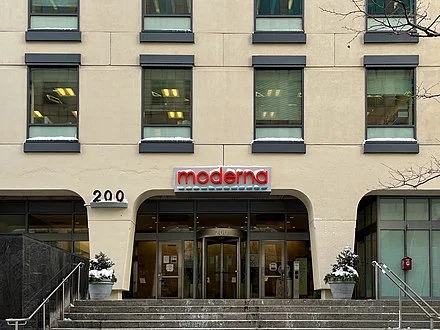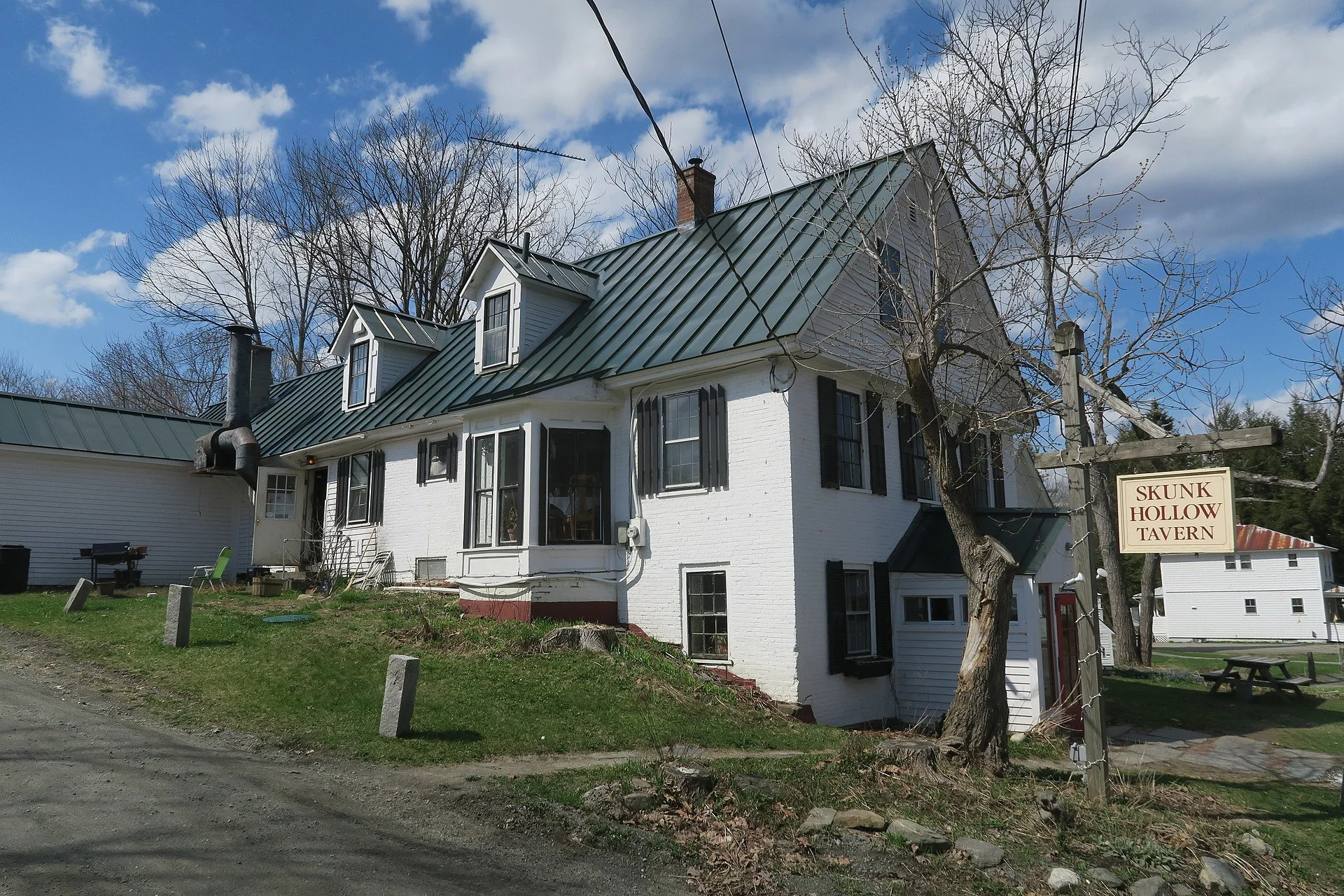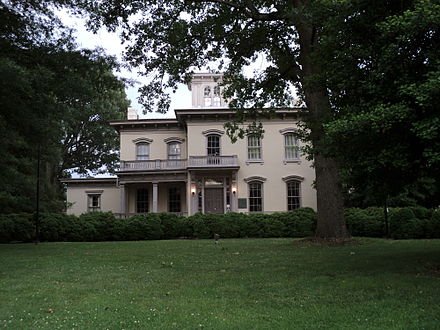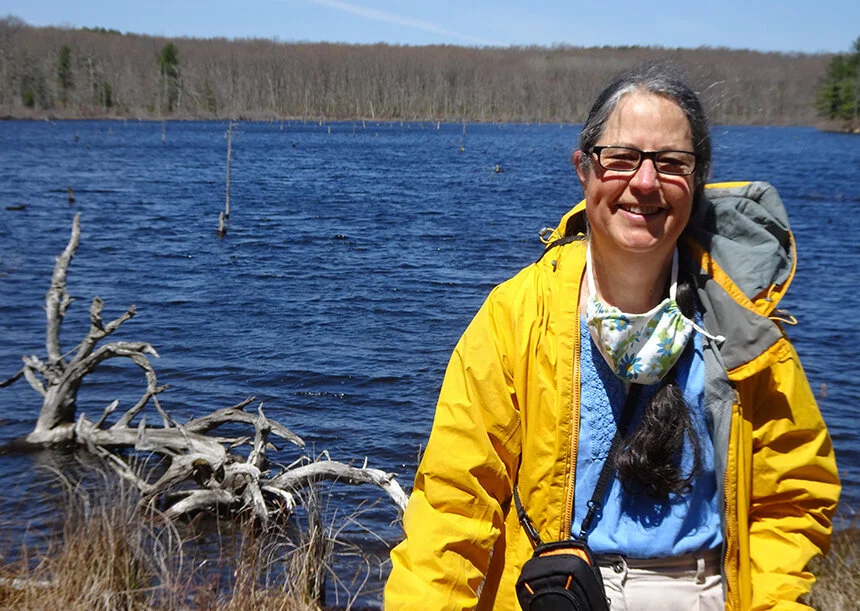
Michael Schmalz: What is Catholic Integralism, and how does Vance fit into it?
Fenwick Hall at Holy Cross, named after Benedict Joseph Fenwick, is the college's flagship building.
WORCESTER, Mass.
Since his nomination as the Republican candidate for vice president, focus has intensified on JD Vance’s religious beliefs and how they connect to his politics.
Vance is a convert to Catholicism and seems to have the same policy positions that many American Catholic conservatives hold: opposition to abortion, support for the traditional family, skepticism regarding liberal immigration policies and efforts to combat climate change, and advocacy of economic tariffs.
Some news reports have also referenced Vance’s apparent association with Catholic Integralism, although Vance himself has not addressed the issue publicly.
So, now might be a good time to ask: What is Catholic Integralism?
The basic position of Catholic Integralism is that there are two areas of human life: the spiritual and the temporal, or worldly. Catholic Integralists argue that the spiritual and temporal should be integrated – with the spiritual being the dominant partner. This means that religious values, specifically Christian ones, should guide government policies.
Catholic Integralists disagree about how to achieve this integration between the spiritual and temporal. Some argue that Christians, particularly Catholics, should have advisory roles in government and lead by example. Other Catholic Integralists want a more comprehensive approach to organizing society along Christian principles.
Catholic Integralists share an opposition to liberalism. Generally, liberalism is understood as a political philosophy that supports limits on the government’s authority and backs constitutional protections for the rights of individuals and minorities. But Catholic Integralists argue that liberalism is incapable of establishing deep forms of human community because it values individualism and liberty above all things.
The irony, from the Catholic Integralist perspective, is that liberalism is not really that liberal. Instead, liberalism demands – and enforces – adherence to a certain set of values, like tolerance and pluralism, that prevents creating a social order in which human beings can realize a larger, God-given meaning for their lives.
Catholic critiques
There are strong criticisms of Catholic Integralism coming from both within the Catholic church and beyond.
The Vatican II document, “Dignitatis Humanae,” affirms that the state should protect religious liberty for all, not only Catholics. This is a position that some Catholic Integralists would find problematic.
Other critics have argued that Catholic Integralism is “unreasonable” and unworkable because society needs to rely on the cooperation of individuals who inevitably have different ideas and values.
Vance and Integralist views
When considering Vance’s current policy commitments, some certainly seem consistent with Catholic Integralist views. For example, Catholic Integralists might justify opposing immigration and migration because they believe that society needs to be more homogeneous in order to have a shared system of values.
Additionally, Vance has recently called to criminalize gender-affirming care for minors. In one sense, Vance is expressing the overall Catholic belief that sex and gender distinctions are willed by God – a point that Pope Francis has also made. But moving to enforce this religious belief by law might reflect a Catholic Integralist position that society must respect “natural law,” or the order of the universe as believed to be established by God.
Right now, Catholic Integralism is of interest to a distinct minority of Catholic academics and political conservatives in the the English-speaking world. But if Vance is elected vice president, it will be interesting to see what happens if he clarifies – or expands – his apparent Catholic Integralist connections.
Mathew Schmalz is a professor of religious studies at the College of the Holy Cross, in Worcester. He is a registered independent voter
The Mass. surtax experiment
In ancient times, Egyptians seized for failing to pay taxes.
Adapted from Robert Whitcomb’s “Digital Diary,’’ in GoLocal24.com
Massachusetts collected about $1.8 billion from a new voter-approved levy on rich residents through the first nine months of this fiscal year; the year ends June 30. That’s $800 million more than what the legislature and Gov. Maura Healey had projected for this revenue for all of fiscal 2024! The levy, which many call “the millionaires’ tax,’’ is a 4 percent surtax on personal income over $1 million.
The money is supposed to go to transportation (especially in fixing and expanding the MBTA, which, reminder, also serves Rhode Island) and education. A big question is whether those improvements, by making the state more competitive from a physical-infrastructure and services standpoint, will more than offset the macroeconomic effects of folks taking their money to such tax havens for the affluent as New Hampshire, “The Parasite State,” with their much thinner public services.
Some businesspeople, for example, might decide that education and transportation improvements financed by the surtax will make the state enough of a better place to make money in the long term as to more than offset the increase in their income tax. Of course, for many millionaires and billionaires, any tax is too much; and they don’t need many of the public services used by the poor and middle class, including public schools, though I suppose they do like having, say, highways and airports.
We’ll probably know within a couple of years how this tax experiment is working out, and what the lessons might be for other states, especially in New England, though a recession may make it difficult to measure its long-term effects. It seems unlikely that Red States, most of which are in the South, will do anything like it. Rich folks have too much power there. But some Blue States might try variants of the Massachusetts experiment.
The Boston origins of Mother’s Day
Julia Ward Howe
Text excerpted from The Boston Guardian
(Robert Whitcomb, New England Diary’s editor, is chairman of The Boston Guardian.)
Mother’s Day got its start on Beacon Street in Boston’s Back Bay celebrating not only mothers but peace.
Julia Ward Howe (1819-1910), who lived most of her life at 241 Beacon Street, began advocating a “Mother’s Day” in the 1870s.
The ancient Greeks held spring ceremonies for Rhea, mother of gods, and in the 1600s the English had a “Mothering Day”, where servants were given the fourth Sunday of Lent off to bring cakes to their mothers.
America’s Mother’s Day, however, started with Howe.
Howe was not an average mother.
She was an activist, an abolitionist, a women’s suffrage advocate and a writer who clashed with her prominent transcendentalist husband Samuel Gridley Howe over his wish that she shun public life. According to her diary, he beat her. She considered divorcing him on various occasions but never did.
1915 Mother’s Day card. Of course, some may have more nuanced views of their mothers.
Marjorie Kelly: Fearsome ‘financialization’ drags down America
— Photo by Ingfbruno
Via OtherWords.org
BOSTON
It’s been been 15 years since the collapse of Lehman Brothers.
The investment firm’s startling downfall marked the beginning of a historic Wall Street crash that swiftly wiped out over $7 trillion in home equity and $2.8 trillion in retirement portfolios.
Wall Street hasn’t fundamentally changed its behavior. Since then, Big Finance has engineered an even more entrenched system of creating wealth mostly for the ultra-rich while spinning out crisis after crisis for the rest of us.
That system has led to insecure, low-wage contract jobs replacing stable work, staggering debt mounting for college graduates, and monopolies crushing family businesses. It’s entrenched a political system captured by billionaires and huge corporations and left society struggling to meet the challenge of climate change.
This anniversary is an opportunity to take a step back and look at the overarching problem here: “financialization.” While we used to have an economy that manufactured stuff, now it manufactures debt.
Before 2008, big banks financialized mortgages. Now they’re financializing houses, buying up single family homes and charging high rents, scrimping on maintenance, and pursuing aggressive evictions.
The same is happening from health care to the local news, as private equity firms buy up vital businesses, cut staff and services to pad profits, and then sell their assets for scrap when the businesses predictably fail.
The latest Wall Street game is to turn the planet into a new asset class, creating “natural asset companies” to monetize “ecosystem services” from water, forests, coral reefs and farms.
What drives financialization is what I call “wealth supremacy” — a bias ingrained in our economic system that tells us wealthy people matter most. It suggests the core aim of our economy should be delivering ever-increasing gains to their investment portfolios.
This bias is embodied in a series of myths. There’s the myth that no amount of wealth is ever enough. Another is that only shareholders and executives should have a say in corporations, while workers are disenfranchised and dispossessed.
Then there’s the myth of the free market, which tells us corporations and capital must be able to move freely throughout the world, while the freedom of people — democracy — must be subordinated.
Recognizing wealth supremacy helps us see our task: to build an economic system designed not for maximum investment returns, but for life to flourish. My organization, the Democracy Collaborative, calls it a “democratic economy” — and it’s rising all around us.
For starters, corporations don’t have to be owned by shareholders or executives. They can be owned by workers themselves.
Already workers in the U.S. own some 6,000 companies. Employees at worker-owned companies like the New York City-based Cooperative Home Care Associates and the San Francisco-based waste disposal and recycling company Recology enjoy more stable jobs and double the retirement savings of employees at conventional firms.
Nor do big banks need to do all the banking.
Roughly 1,000 community development financial institutions provide fair loans to marginalized communities typically shunned by Wall Street banks. For example, River City Credit Union in San Antonio, Texas helps immigrants set up bank accounts so they don’t have to rely on predatory payday lenders and check-cashing storefronts.
And what if more of us owned our utilities?
Eighty-five percent of Americans already get their water from public utilities instead of for-profit companies. Now there’s a growing movement from Ann Arbor, Mich., to Maine and New York for publicly and cooperatively owned energy utilities. Such companies could be more willing than for-profit utilities to transition quickly from fossil fuels and make investments to prevent sparking wildfires.
The models and pathways we need exist around us. But making the rapid, systemic change we need requires letting go of the myth that wealth-maximizing capitalism is the only system possible.
It’s not. And if we want to keep our society standing, we need to topple wealth supremacy.
Marjorie Kelly is Distinguished Senior Fellow at The Democracy Collaborative and an advisory committee member of Massachusetts Public Banking. Her new book is Wealth Supremacy: How the Extractive Economy and the Biased Rules of Capitalism Drive Today’s Crises.
The mysteries of gray/grey
“Upward” (mushroom spores on paper), by western Massachusetts-based artist Madge Evers, in the group show “Grey Areas,’’ at Kingston Gallery, Boston, Aug. 2-27
The gallery says:
This year’s annual exhibition by Kingston Gallery’s Associate Artists explores the theme of “Grey Areas’’ from different perspectives and media. …The 10 artists interpret our world with divergent approaches to both the enigmatic concept and the color grey….They explore liminal places, ideas, and eras that generate questions - many without answers. Responding to the existential areas of an unknowable future or the space between ecosystems, they wonder how to acknowledge non-human collaborators, the myriad ‘what-ifs’ of depression, and the question of secrecy and abuses in institutions and systems of government that operate in obscurity. The diversity of work plays with grey’s ability to take on hue and enliven color, consider the spin of the stories we tell, uncertainty in understanding our world, and the difficulty of truly knowing the space one occupies in that world.’’
xxx
“Madge Evers has adapted the spore print, a mushroom identification tool typically used by mycologists and foragers, to create biomorphic monochromatic works on paper. Like the wind and other animals, she spreads the spores of mushrooms; germinates their powdery spores as they land on paper and creates her version of a fruiting body - it forms a two-dimensional image rather than toadstool. In this interdependence with mushrooms, she wonders: How do I best acknowledge my unwitting collaborators?’’
View from Mount Holyoke, Northampton, Mass., after a thunderstorm—The Oxbow (of the Connecticut River) (1836), by Thomas Cole
On the dots
“Blue Dot 10’’ (oil on canvas), by Mio Yamato, in her show “The Breathing Star,’’ at Heather Gaudio Fine Art, New Canaan, Conn., through April 29.
The gallery says:
“Mio Yamato has gained international attention in recent year for her signature marks -- copious amounts of tiny, pearl-like dots painted with oil or ink on canvases, wooden panels, walls, or large swaths of fabric. These are finely applied and arranged to articulate formations seen in nature, such as mountainous ranges, geological strata, constellations in the sky, and the like.’’
‘Ammo boxes into icons’
“Icon of the Archangel Michael,’’ by Sofia Atlantova, at the Museum of Russian Icons, Clinton, Mass., in the show “Artists for Ukraine: Transforming Ammo Boxes into Icons,’’ through Feb. 13 Painting on loan from Catherine Mannick.
The museum explains that the show presents three Ukrainian icons painted on the boards of ammunition boxes by Oleksandr Klymenko and Sofia Atlantova, a husband-wife artistic team from Kyiv, the capital of Ukraine.
“The project ‘Buy an Icon—Save a Life’ was developed in response to the 2014 Russian invasion of Ukraine, when Klymenko encountered empty wooden ammunition boxes from combat zones and noted their resemblance to icon boards (doski). By repurposing the panels, the project strives, in the artist’s words, ‘to transform death (symbolized by ammo boxes) into life (traditionally symbolized by icons in Ukrainian culture). The goal, this victory of life over death, happens not only on the figurative and symbolic level but also in reality through these icons on ammo boxes.’
“Exhibitions of the ammo box icons have been staged throughout Europe and North America to raise awareness of the ongoing war in Ukraine. In addition, sales have provided substantial funds to support the Pirogov First Volunteer Mobile Hospital, the largest nongovernmental undertaking to provide medical assistance to the Donbas region. The Russian invasion of Ukraine in February 2022 strengthened the resolve of Atlantova and Klymenko to continue painting icons on boards taken back from the frontlines. To date, the project has raised more than $300,000.’’
The Clinton Town Hall was built in 1909. Designed by Peabody and Stearns, it replaced the previous Town Hall, built in 1871-1872, destroyed by fire in 1907. Even fairly small New England towns often built impressive town halls in the late 19th and early 20th centuries out of civic pride.
Omicron boosters: Is salesmanship trumping science?
Moderna headquarters in Cambridge, Mass.
Last month, the Food and Drug Administration authorized Omicron-specific vaccines (with Moderna’s the best known), accompanied by breathless science-by-press release and a media blitz. Just days after the FDA’s move, the Centers for Disease Control and Prevention followed, recommending updated boosters for anyone age 12 and up who had received at least two doses of the original COVID-19 vaccines. The message to a nation still struggling with the COVID pandemic: The cavalry — in the form of a shot — is coming over the hill.
But for those familiar with the business tactics of the pharmaceutical industry, that exuberant messaging — combined with the lack of completed studies — has caused considerable heartburn and raised an array of unanswered concerns.
The updated shots easily clear the “safe and effective” bar for government authorization. But in the real world, are the Omicron-specific vaccines significantly more protective — and in what ways — than the original COVID vaccines so many have already taken? If so, who would benefit most from the new shots? Since the federal government is purchasing these new vaccines — and many of the original, already purchased vaccines may never find their way into taxpayers’ arms — is the $3.2 billion price tag worth the unclear benefit? Especially when these funds had to be pulled from other covid response efforts, like testing and treatment.
Several members of the CDC advisory committee that voted 13-1 for the recommendation voiced similar questions and concerns, one saying she only “reluctantly” voted in the affirmative.
Some said they set aside their desire for more information and better data and voted yes out of fear of a potential winter COVID surge. They expressed hope that the new vaccines — or at least the vaccination campaign that would accompany their rollout — would put a dent in the number of future cases, hospitalizations, and deaths.
That calculus is, perhaps, understandable at a time when an average of more than 300 Americans are dying of COVID each day.
But it leaves front-line health care providers in the impossible position of trying to advise individual patients whether and when to take the hot new vaccines without complete data and in the face of marketing hype.
Don’t get us wrong. We’re grateful and amazed that Pfizer-BioNTech and Moderna (with assists from the National Institutes of Health and Operation Warp Speed) developed an effective vaccine in record time, freeing the nation from the deadliest phase of the covid pandemic, when thousands were dying each day. The pandemic isn’t over, but the vaccines are largely credited for enabling most of America to return to a semblance of normalcy. We’re both up-to-date with our covid vaccinations and don’t understand why anyone would choose not to be, playing Russian roulette with their health.
But as society moves into the next phase of the pandemic, the pharmaceutical industry may be moving into more familiar territory: developing products that may be a smidgen better than what came before, selling — sometimes overselling — their increased effectiveness in the absence of adequate controlled studies or published data, advertising them as desirable for all when only some stand to benefit significantly, and in all likelihood raising the price later.
This last point is concerning because the government no longer has funds to purchase COVID vaccines after this autumn. Funding to cover the provider fees for vaccinations and community outreach to those who would most benefit from vaccination has already run out. So updated boosters now and in the future will likely go to the “worried well” who have good insurance rather than to those at highest risk for infection and progression to severe disease.
The FDA’s mandated task is merely to determine whether a new drug is safe and effective. However, the FDA could have requested more clinical vaccine effectiveness data from Pfizer and Moderna before authorizing their updated omicron BA.5 boosters.
Yet the FDA cannot weigh in on important follow-up questions: How much more effective are the updated boosters than vaccines already on the market? In which populations? And what increase in effectiveness is enough to merit an increase in price (a so-called cost-benefit analysis)? Other countries, such as the United Kingdom, perform such an analysis before allowing new medicines onto the market, to negotiate a fair national price.
The updated booster vaccine formulations are identical to the original covid vaccines except for a tweak in the mRNA code to match the omicron BA.5 virus. Studies by Pfizer showed that its updated Omicron BA.1 booster provides a 1.56 times higher increase in neutralizing antibody titers against the BA.1 virus as compared with a booster using its original vaccine. Moderna’s studies of its updated Omicron BA.1 booster demonstrated very similar results. However, others predict that a 1.5 times higher antibody titer would yield only slight improvement in vaccine effectiveness against symptomatic illness and severe disease, with a bump of about 5 percent and 1 percent, respectively. Pfizer and Moderna are just starting to study their updated Omicron BA.5 boosters in human trials.
Though the studies of the updated Omicron BA.5 boosters were conducted only in mice, the agency’s authorization is in line with precedent: The FDA clears updated flu shots for new strains each year without demanding human testing. But with flu vaccines, scientists have decades of experience and a better understanding of how increases in neutralizing antibody titers correlate with improvements in vaccine effectiveness. That’s not the case with COVID vaccines. And if mouse data were a good predictor of clinical effectiveness, we’d have an HIV vaccine by now.
As population immunity builds up through vaccination and infection, it’s unclear whether additional vaccine boosters, updated or not, would benefit all ages equally. In 2022, the U.S. has seen COVID-hospitalization rates among people 65 and older increase relative to younger age groups. And while COVID vaccine boosters seem to be cost-effective in the elderly, they may not be in younger populations. The CDC’s Advisory Committee on Immunization Practices considered limiting the updated boosters to people 50 and up, but eventually decided that doing so would be too complicated.
Unfortunately, history shows that — as with other pharmaceutical products — once a vaccine arrives and is accompanied by marketing, salesmanship trumps science: Many people with money and insurance will demand it whether data ultimately proves it is necessary for them individually or not.
We are all likely to encounter the SARS-CoV-2 virus again and again, and the virus will continue to mutate, giving rise to new variants year after year. In a country where significant portions of at-risk populations remain unvaccinated and unboosted, the fear of a winter surge is legitimate.
But will the widespread adoption of a vaccine — in this case yearly updated COVID boosters — end up enhancing protection for those who really need it or just enhance drugmakers’ profits? And will it be money well spent?
The federal government has been paying a negotiated price of $15 to $19.50 a dose of mRNA vaccine under a purchasing agreement signed during the height of the pandemic. When those government agreements lapse, analysts expect the price to triple or quadruple, and perhaps even more for updated yearly COVID boosters, which Moderna’s CEO said would evolve “like an iPhone.” To deploy these shots and these dollars wisely, a lot less hype and a lot more information might help.
Elisabeth Rosenthal (erosenthal@kff.org, @rosenthalhealth) and Céline Gounder (cgounder@kff.org) are Kaiser Health News journalists.
Chris Powell: Racism? Get specific; pass Larson’s Social Security bill
The village of Thompsonville, in Enfield, Conn. Thompsonville was established in the 19th Century as a carpet-manufacturing center. Orrin Thompson, for whom the community is named, built a dam across Freshwater Brook in 1828 and opened the first carpet mill in 1829. Thompson's first mill employed skilled weavers brought from Scotland.
Carpeting continued to be manufactured in Thompsonville until 1971, by which time most production had shifted to the southern United States.
— Photo by Mirandalovely (talk)
MANCHESTER, Conn.
How racist is Enfield, Conn.? Town government's overreaction to a recent disgraceful but trivial incident is giving the impression that the town has become the northern headquarters of the Ku Klux Klan, even though the incident could have happened anywhere.
It occurred as members of the Enfield High School football team were knocking on doors throughout town soliciting financial donations. At one door a Black player was scorned and sent away with a racial epithet from the resident. Police investigated but determined that, abhorrent as the resident's conduct was, there was no cause for arrest.
Whereupon town government convened another of those "community conversations on race," as if the whole town needed to be lectured on decent behavior.
Maybe Enfield really is that hateful. But if so, specific evidence of anything seriously wrong in town regarding race has not been reported and was not produced at the first "community conversation," which drew about 200 people to Enfield High School. Instead the moderator urged people to examine their own consciences about race, as if some might be obliged to make confession.
In the absence of evidence apart from a single small incident, summoning a "community conversation" was presumptuous, if also politically correct.
Enfield and other towns should have a "community conversation" on race, but of a different sort — that is, regular hearings to air specific complaints about racism in town and to investigate them.
The perpetrator of the insult to the high-school football player is known to police, the player and others and should be invited to the first such hearing along with the insulted player for questioning and discussion. Other witnesses to what they consider racism in town should come forward too and their complaints should be followed up at future hearings, with the accused people and institutions invited. Town officials and residents then could discuss what if anything should be done.
Such procedure would generate real and relevant conversations, not the pious and irrelevant handwringing of the first "community conversation." Far more than such handwringing, a hearing on specifics might deter racists, warning them that they might be held accountable in public for their hatefulness.
More likely, of course, such a procedure would generate few if any complaints of racism in Enfield. Maybe then the town could begin to get its good name back and, along with Connecticut generally, might pay less attention to the occasional, and trivial misconduct of jerks on their own doorsteps and more attention to the state's longstanding racial disparities.
Those disparities include the racial-performance gap in education, zoning's obstruction of racial and economic integration, and welfare policy's destruction of the family and creation of a racial underclass.
Obsessing about occasional racist epithets uttered by nobodies is a pathetic copout.
xxx
As they campaign for re-election, Democrats on the national and state level are touting lots of new programs created in the name of alleviating poverty, even as soaring inflation, caused in part by the explosion of those programs and other government spending, erases the programs' benefits.
Meanwhile, the nation's most comprehensive anti-poverty program, Social Security, is eroding under that inflation even as Connecticut's own U.S. Rep. John B. Larson bravely keeps pressing legislation to improve the system's benefits and finances.
But according to a recent report in Politico, Larson's Social Security bill is being blocked not by the usual retrograde Republicans in Congress but by the Democratic leader in the House, Speaker Nancy Pelosi.
Larson's bill isn't another giveaway to be financed by debt and inflation. It would be financed largely by eliminating the limit on Social Security taxes paid by high earners, whose Social Security taxes now are capped at the first $400,000 of annual income.
Pelosi and her husband have gotten rich trading stocks whose values are heavily affected by the federal legislation she steers and votes on. Her party should push her out of the way and pass Larson's Social Security bill while the Democrats still have a majority in Congress and a president who would sign it.
Chris Powell is a columnist for the Journal Inquirer, in Manchester. He can be reached at CPowell@JournalInquirer.com.
Bucolic and unprofitable
”The Aqua Biscayne’’ (oil on canvas), by Hartland, Vt.-based William B. Hoyt, at Edgewater Gallery, Middlebury, Vt.
The wonderful (especially in name) Skunk Hollow Tavern, in Hartland, Vt. It was built around 1790.
— Photo by John Phelan
Chris Powell: Bring back fathers! A lesson from Truman
“Parental Advice,’’ by Belgian painter Josephus Laurentius Dyckmans (1811-1888)
MA NCHESTER, Conn.
For Father's Day the Connecticut Department of Children and Families publicized Connecticut's Fatherhood Initiative, a program that DCF runs with the state Department of Social Services that strives t men as involved with their children as those children are involved with welfare agencies.
The social science confirming that a father's involvement with his children is crucial long has been overwhelming and DCF laid it out well. Children involved with their fathers do better in every respect in life: educationally, emotionally and in physical and mental health and social development. They are far more likely to avoid poverty, to grow up happy, confident, and kind, and to find decent employment. They are far less likely to get in trouble.
"Children want to make fathers proud," the DCF stressed. Exactly!
The Fatherhood Initiative is great as far as it goes, but like so much else in government, it is remedial to the problem rather than what is most needed: prevention. That's because a third of U.S. children are living without a father in their home. Programs like the initiative will be lucky to reach a tiny percentage of them.
Especially required are changes to the welfare system to remove its perverse incentives, to stop it from discouraging family formation, from encouraging childbearing outside marriage, and from substituting economically for fathers. Indeed, if, as social science suggests, fatherlessness is the country's worst social problem, the root cause of most other social problems, then childbearing outside marriage is more anti-social than some things that are criminalized.
This needs to be taught in schools and all places where young people gather. But politically government is too scared to do it, lest it distress the many fatherless children who would hear the lesson and offend their single parents.
The lesson most needs to be taught in cities, where as many as 90% of children have no fathers in their home or lives. But that is where politics makes it least likely to be taught.
Before the start of "the War on Poverty," in the ‘60s, ago the prospect of having a child outside marriage terrified young men and women alike, for both moral and economic reasons, reasons that were essentially the wisdom of the ages.
But then public policy removed the economic reasons, hastening the erosion of the moral reasons. Government urgently should find ways of restoring the wisdom of the ages to welfare policy.
For as the country might have noticed by now -- from Los Angeles to Chicago to New York and to Hartford, Bridgeport and New Haven -- fatherless places are miserable and violent.
xxx
Winsted, Conn., native Ralph Nader, the great advocate of civic activism, wrote this week that Connecticut U.S. Rep. John B. Larson is clamoring -- privately, apparently to minimize embarrassment within his party -- to get House Democrats to push their party's tenuous majority in the Senate to start doing something.
That is, Nader suggests, Larson wants Senate Democrats to play Dirty Harry and tell Senate Republicans: "Go ahead and filibuster -- make our day!"
Nader notes that with the Senate tied 50-50 and with 60 votes needed to terminate debate and bring legislation to a vote, the Republican Senate leadership has needed only to threaten a filibuster to induce the Democratic Senate leadership to put aside any legislation from the Democratic-controlled House.
But Larson is said to argue that the Democratic senators should bring House bills to debate anyway and cause the Republican senators to be seen opposing them and to spend much time and energy doing so. For even if the Republican filibusters succeeded, issues would be illuminated and public pressure might change some minds.
A former history teacher, Larson may know that in 1948 Democrat Harry Truman overcame huge odds and got elected president in his own right in part by calling a special session of Congress, which had a Republican majority, to consider his administration's agenda and then denouncing the "do-nothing" Republicans when they wouldn't act favorably.
Today's Democratic agenda is hardly perfect but the country deserves a debate on it and some work from the Senate for a change.
Chris Powell is a columnist for the Journal Inquirer, in Manchester.
Too wet to plant yet
“Spring Field’’ (acrylic on canvas), by Hannah Bureau, in her show “Open Air,’’ at Edgewater Gallery, Middlebury, Vt. through May 22. A native of Paris, she’s now based In Waltham, Mass.
Yes, plenty of shoes are still made in New England
New Balance trail running shoes
Edited from a New England Council (newenglandcouncil.com) report.
“New Balance, the athletic-shoe company, is expanding with a new facility in Methuen, Mass. This factory was opened with Gov. Charlie Baker, U.S. Rep. Lori Trahan and local leaders, to participate in the grand opening of New Balance’s newest manufacturing hub.
“The 80,000-square-foot facility opened for business in January after $20 million in renovations, according to the company. The factory currently employs more than 90 associates producing the brand’s MADE 990v5 running shoe, with plans to more than double the current workforce and production capabilities by the end of the year. Including the new New Balance factory in Methuen, New Balance owns five manufacturing facilities in Maine and Massachusetts where about 1,000 U.S. workers prepare, cut and mold athletic-shoe materials and components and then sew, press and assemble into the final product.
“Manufacturing has always been an important part of our company culture,” said Joe Preston, New Balance president and CEO. “Our associates have proven that high-quality athletic footwear can be produced in the U.S. Their skilled craftsmanship and dedication to continuous improvement will help us meet our significant U.S. and global consumer demand and drive our continued business growth.”
By the late 19th Century, the shoemaking industry had migrated to the factory and was increasingly mechanized. Pictured, the bottoming room of the B. F. Spinney & Co. factory in Lynn, Mass., in 1872.
Linda Gasparello: Millennials can be pioneers in cities with cheap houses
In Danville, Va., home of tobacco entrepreneur William T. Sutherlin, called by locals the "Last Capitol of the Confederacy.’’ But most houses there don’t look like this!
WEST WARWICK
Millennials are supercharging the U.S. housing market. They have lots of cash, and they’re making a dash for cities like Boise, Idaho, Raleigh, North Carolina, Tampa, Florida, and Austin, Texas.
As home-mortgage rates rise and inventory shrinks in those and other A-list cities, Millennials, particularly those who can work remotely, might want to consider C-list – C for cheap -- cities.
Hey, Millennial. Don’t be bummed about being outbid for that pricey “adorable vintage house within walking distance to entertainment” in Austin (actually, a teardown with a honky-tonk a few yards from the back porch). Be cheered that Wall Street 24/7, a news and financial site, has just released a special report entitled “The Cheapest City to Buy a Home in Every State.”
If you’re a pioneering Millennial, here are a few cities in the report:
Gary, Ind., could be “your home sweet home” -- just like the line from the song in The Music Man, which was a hit on stage and screen long before you were born. The median home value is $66,000. Cheap homes abound in this not-so-cheerful city.
Flint, Mich., The fact that you can’t drink the water is no problem for you because you’ve only ever drunk bottled water. The median home value is $29,000. If you decide to buy a home there, keep buying bottled water from fresh municipal springs -- in other states.
Camden, N.J. There is great news for home buyers. Trenton has taken the “Murder Capital of New Jersey” title away from Camden, a perennial titleholder. The median home value in Camden is a bargain $84,000 versus $335,600 for New Jersey as a whole. Camden is downriver from Trenton, so mind the floating corpse risk.
Minot, N.D. It’s a hot market: the median home value is $208,700 versus $193,900 for the state. As for temperature, it’s not. I had a school friend from Minot who told me the saying there was, “Why not Minot? Because freezing is the reason.” Look at those months of frigid temperatures as being the reason to get more wear out of your chichi Canada Goose Expedition Parka.
East St. Louis, Mo. One resident, in a review on the Niche site, wrote, “I didn't like all of the abandoned homes and buildings. It looked like the area isn't livable and then two houses down, it is livable.” The Niche reviewers give the city bad marks for violence, but great ones for the high school football team and the diners. The median house value is $54,000.
The city that really caught my eye in the report was Danville, Va. – in a state where I lived for most of my life.
For years, because I’m interested in architecture, I’ve pored through listings on historic house sites. Recently on one site, there were many dilapidated Victorian houses listed in Danville’s Old West End, priced from $15,000 to $55,000.
For much of its history, Danville was a D-list city – D for disreputable. This tobacco-processing and textile-manufacturing city’s reputation rolled downhill for a century, from the Civil War (where it was major center of Confederate activity and was the “Last Capital of the Confederacy” from April 3-7, 1865) to “Bloody Monday,” the name given to a series of arrests and brutal attacks that took place during a nonviolent protest by Blacks against segregation laws and racial inequality on June 10, 1963. Of the protests, leading up to the March on Washington on Aug. 28, the Rev. Martin Luther King Jr. preached, “As long as the Negro is not free in Danville, Virginia, the Negro is not free anywhere in the United States of America.”
Danville’s work in recent decades to create a new identity is paying off. The median home value is $90,500. The city is attracting high-tech companies and Millennial workers – new residents who will continue its transformation from disreputable to desirable.
Linda Gasparello is co-host and producer of White House Chronicle, on PBS. Her email is lgasparello@kingpublishing.com, and she’s hased in West Warwick, R.I. and Washington, D.C.
Paintings from two revered coastal art centers
“Under Dark Sky” (oil on canvas), by Eric Hudson (1864-1932), owned by the Monhegan Museum of Art & History, Monhegan Island, Maine.
The Cape Ann Museum, in Gloucester, Mass., is hosting a special exhibition, “Cape Ann & Monhegan Island Vistas: Contrasted New England Art Colonies,’’ through Feb. 13. It’s in collaboration with the Monhegan Museum of Art & History. The exhibition shows the growth of two of New England’s oldest and most revered summer art colonies. It features works by artists who visited and were inspired by both places, including Theresa Bernstein, Walter Farndon, Eric Hudson, Margaret Patterson, and Charles Movalli.
The village of Monhegan on Monhegan Island, with uninhabited Manana Island in the background. Monhegan has fewer than 100 year-round residents.
The Monhegan Island Light complex is now run as the Monhegan Museum, with exhibits of the island's natural, social, industrial, cultural and artistic history. The lighthouse tower's light mechanism is still operated by the Coast Guard, but the Monhegan Museum owns the tower and opens it to the public on occasion each summer season.
David Warsh: The exciting lives of former newspapermen
— Photo by Knowtex
SOMERVILLE, Mass.
After the Internet laid waste to old monopolies on printing presses and broadcast towers, new opportunities arose for inhabitants of newsrooms. That much I knew from personal experience. With it in mind, I have been reading Spooked: The Trump Dossier, Black Cube, and the Rise of Private Spies (Harper, 2021), by Barry Meier, a former reporter for The New York Times and The Wall Street Journal. Meier also wrote Pain Killer: A “Wonder” Drug’s Story of Addiction and Death (Rodale, 2003), the first book to dig in to the story of the Sackler family, before Empire of Pain: The Secret History of the Sackler Dynasty (Doubleday, 2021), by New Yorker writer Patrick Radden Keefe, eclipsed it earlier this year. In other words, Meier knows his way around. So does Lincoln Millstein, proprietor of The Quietside Journal, a hyperlocal Web site covering three small towns on the southwest side of Mt. Desert Island, in Downeast Maine.
Meier’s book is essentially a story about Glenn Simpson, a colorful star investigative reporter for the WSJ who quit in 2009 to establish Fusion GPS, a private investigative firm for hire. It was Fusion GPS that, while working first for Republican candidates in early 2016, then for Hillary Clinton’s presidential campaign, hired former MI6 agent Christopher Steele to investigate Donald Trump’s activities in Russia.
Meier, a careful reporter and vivid writer, doesn’t think much of Simpson, still less of Steele, but I found the book frustrating: there were too many stories about bad behavior in the far-flung private intelligence industry, too loosely stitched together, to make possible a satisfying conclusion about the circumstances in which the Steele dossier surfaced, other than information, proven or not, once assembled and packaged, wants to be free. William Cohan’s NYT review of Spooked was helpful: “[W]e are left, in the end, with a gun that doesn’t really go off.”
Meier did include in his book (and repeat in a NYT op-ed) a telling vignette about Fusion GPS co-founder Peter Fritsch, another former WSJ staffer who in his 15-year career at the paper had served as bureau chief in several cities around the world. At one point, Fritsch phones WSJ reporter John Carreyrou, ostensibly seeking guidance on the reputation of a whistleblower at a medical firm – without revealing that Fusion GPS had begun working for Elizabeth Holmes, of whose blood-testing start-up, Theranos, Carreyrou had begun an investigation.
Fritsch’s further efforts to undermine Carreyrou’s investigation failed. Simpson and Fritch tell their story of the Steele dossier in Crime in Progress (2019, Random House.) I’d like to someday read more personal accounts of their experiences in the private spy trade, I thought, as I put Spooked and Crime in Progress back on the shelf Given the authors’ new occupations, it doesn’t seem likely those accounts will be written.
By then, Meier’s story had got me thinking about Carreyrou himself. His brilliant reporting for the WSJ, and his 2018 best-seller, Bad Blood: Secrets and Lies in a Silicon Valley Startup (Knopf, 2018, led to Elizabeth Holmes’s trial on criminal charges that began last month in San Jose. Thanks to Twitter, I found, within an hour of its appearance, this interview with Carreyrou, now covering the trial online as an independent journalist.
My head spun at the thought of the leg-push and tradecraft required to practice journalism at these high altitudes. The changes wrought by the advent of the Web and social media have fundamentally expanded the business beyond the days when newspapers and broadcast news were the primary producers of news. In 1972, when I went to work for the WSJ, for example, the entire paper ordinarily contained only four bylines a day.
So I turned with some relief to The Quietside Journal, the Web site where retired Hearst executive Lincoln Millstein covers events in three small towns on Mt. Desert Island, Maine, for some 17,000 weekly readers. In an illuminating story about his enterprise, Millstein told Rick Edmonds, of the Poynter Institute, that he works six days a week, again employing pretty much the same skills he acquired when he covered Middletown, Conn., for The Hartford Courant forty years ago. (Millstein put the Economic Principals column in business in 1984, not long after he arrived as deputy business editor at The Boston Globe).
My case is different. Like many newspaper journalists in the 1980s, I worked four or five days a week at my day job and spent vacations and weekends writing books. I quit the day job in 2002, but kept the column and finished the book. (It was published in 2006 as Knowledge and the Wealth of Nations: A Story of Economic Discovery).
Economic Principals subscribers have kept the office open ever since; I gradually found another book to write; and so it has worked out pretty well. The ratio of time spent is reversed: four days a week for the book, two days for the column, producing, as best I can judge, something worth reading on Sunday morning. Eight paragraphs, sometimes more, occasionally fewer: It’s a living, an opportunity to keep after the story, still, as we used to say, the sport of kings.
David Warsh, a veteran columnist and an economic historian, is proprietor of Somerville-based economicprincipals.com, where this essay first ran.
Too foliage-oriented?
“Nope, Not This” (acrylic on canvas), by Rupert, Vt.-based Jane Davies, at Edgewater Gallery, Middlebury, Vt.
Countryside in eastern Rupert.
Rupert is the filming location for the syndicated PBS cooking show Cook's Country. The white country house, known as Carver House, has been used as the show’s set. Christopher Kimball, former executive producer and host of Cook's Country, has a house nearby.
'Doorway to the sea'
“Christina’s World,’’ by Andrew Wyeth (1917-2009), the very popular American “realist “ painter. The woman in the painting, Anna Christina Olson (1893-1968), had a degenerative muscular disorder that prevented her from walking after she was 30. She refused to use a wheelchair, so she would crawl. The house and barn are in Cushing, Maine, where the Wyeth family had a summer house.
“The world of New England is in that house – spidery, like crackling skeletons rotting in the attic – dry bones. It’s like a tombstone to sailors lost at sea, the Olson ancestor who fell from the yardarm of a square-rigger and was never found. It’s the doorway of the sea to me, of mussels and clams and sea monsters and whales.’’
-- Painter Andrew Wyeth, on the home of his model Christina Olson, in Andrew Wyeth: A Secret Life (1996), by Richard Meryman
The Olson House in 1995. The house and its occupants, Christina and Alvaro Olson, were depicted in paintings and sketches by Wyeth from 1939 to 1968. The house was designated a National Historic Landmark in June 2011. The Farnsworth Art Museum, in Rockland, Maine, owns the house, which is open to the public.
'Like a sound'
— Photo by User:Fir0002
Dark hills at evening in the west,
Where sunset hovers like a sound
Of golden horns that sang to rest
Old bones of warriors under ground,
Far now from all the bannered ways
Where flash the legions of the sun,
You fade—as if the last of days
Were fading, and all wars were done.
“Dark Hills,’’ by Edward Arlington Robinson (1869-1935), a Maine native and one of the most celebrated New England poets
Edward Arlington House, in Gardiner, Maine, where he spent his unhappy childhood
Grace Kelly: Book author touts easy, healing walks
Marjorie Hollman Turner
From ecoRI News (ecori.org)
Thirty years ago Marjorie Turner Hollman found her right side paralyzed after brain surgery. She was unable to drive in the seven years of recovery that followed and turned to writing and taking walks down her dead-end road for solace.
When she met her second husband, an avid outdoorsman, she slowly began to move beyond handicap-accessible walks to what she now calls “easy walks.”
“If I had not found myself on a hospital bed paralyzed after brain surgery, I wouldn’t be doing easy walks,” said Turner Hollman, who lives in Bellingham, Mass., which is just over the Rhode Island border near Cumberland. “I have healed to the extent that I am able to walk with support, meaning hiking poles, and I’m very selective of where I choose to walk. I’m not your Appalachian Mountain Club material.”
Over the years, Turner Hollman sought out more of these easy walks, which she defines as “walks that don’t have too many roots, don’t have too many rocks, are relatively level … with something of interest along the way.”
In essence, walks that children, people with mobility issues, and those new to the outdoors can enjoy. Anyone, really.
And as Turner Hollman started her easy walks, she began to chronicle them — and the natural world around her — first for her local newspaper and later on her blog. Then, the questions came pouring in.
“I started having people find my Web site and they kept asking the question, Where’s Joe’s Rock?’” Turner Hollman said. “Well, it’s in Wrentham [Mass.] on Route 121 right near the Cumberland line, and after about the 500th time somebody came to that article, I said, ‘Well I think there’s a need here.’”
Turner Hollman wrote her first book, Easy Walks in Massachusetts, in 2014 to provide a one-stop-shop resource for anyone else in the state looking for easy walks. But the process was far from easy, since a lot of the walks she enjoyed weren’t in any guidebooks.
“At the time, they didn’t have any guides for outdoor things here. We’re not the Cape, we’re not in the White Mountains, we don’t have that cache,” she said. “Today, a lot of town offices have put up maps of their conservation areas, but when I started writing these in 2013, there were next to none. I visited town halls and said, ‘Help me!’ or called and said, ‘Do you have properties that kind of fit this?’ I did a lot of legwork.”
Since then, she’s written another three “easy walks” books, one of which was done in conjunction with the Ten Mile River Watershed Council, an organization with offices in Rumford, R.I., and Attleboro, Mass. This two-state watershed contains one of her favorite easy walks, Hunts Mills, which has a man-made dam and waterfall and trails that loop through the woods.
“It’s stunning and incredibly accessible,” Turner Hollman said. “You can even just sit in your car and watch the falls … it’s this hidden away little spot. It’s just a gem.”
In her most recent book, Finding Easy Walks Wherever You Are, Turner Hollman takes the principles of seeking out and enjoying easy walks to a broader level, providing tips and perspectives that anyone can use to seek out a special place to walk anywhere.
“There are plenty of places, but people don’t know how to find them because a lot of the time they’re off the beaten track,” she said. “I encourage people to consider places like, for example, your local cemetery to visit respectfully, understanding its first purpose is not a walking place … but they’re wonderful places to walk and often have paved roadways through them.
“So that’s a lot of what I talk about in finding easy walks wherever you are. It’s providing ideas that people maybe don’t think about.”
The book is also a culmination of Turner Hollman’s personal experience and belief that anyone, regardless of ability, can go on a walk.
“What I’ve learned in sharing Easy Walks is that many people can enjoy these outings, regardless of ability,” she wrote in a blog post from 2015. “Rather than my disability creating a barrier, I’ve found that working with, in spite of, and because of my disability has enriched my life, and the lives of many others. … These days I’m even more determined to search out and point others to places they can enjoy together.”
Grace Kelly is a journalist with ecoRI News.


